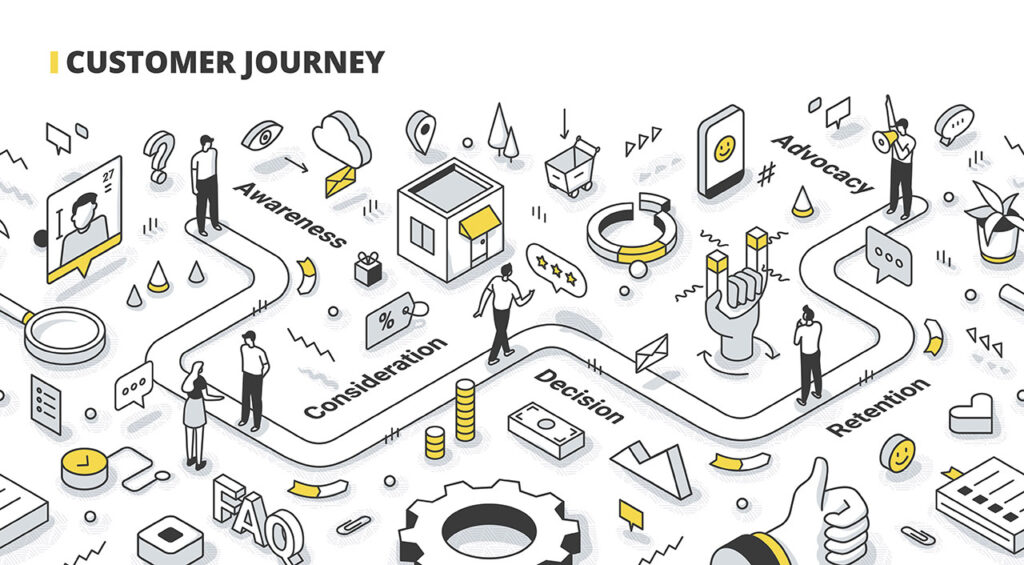What are touchpoints?
Touchpoints are all points of contact between a person and a company.

They arise along the entire customer journey – from the first perception to the long-term customer relationship.
A touchpoint can be digital, physical or personal.
Different types of touchpoints
1st type: Digital touchpoints
Digital channels play a central role in today’s brand communication.
These include:
- Websites and online stores: Often the first point of contact for potential customers. Clear navigation and an appealing design are crucial here.
- Social media: Platforms such as Instagram, Facebook or LinkedIn offer the opportunity to interact directly with the target group and communicate brand values.

- E-mails and newsletters: A targeted, personalized approach strengthens customer loyalty.
- Online advertising: Ads in search engines or on social networks increase visibility.
- Review platforms: Reviews have a significant influence on purchasing decisions.
2nd type: Physical touchpoints
Not all interactions take place online.
Many touchpoints occur in the real world:
- Branches and stores: Personal contact can create trust and promote a positive shopping experience.

- Events and trade fairs: Direct encounters offer companies the opportunity to bring their products and values to life.
- Product packaging: A high-quality design and sustainable materials leave a lasting impression.
- Advertising materials: Brochures, flyers and posters are classic but still effective means of communicating information.
3rd type: Personal touchpoints
The direct exchange between companies and customers is often decisive for the long-term relationship:
- Customer service and support: friendly, competent advice can have a strong influence on customer satisfaction.
- Sales meetings: Personal advice helps to better understand individual needs and offer suitable solutions.
- Word of mouth: Recommendations from friends or family are one of the most effective forms of advertising.

How to use touchpoints effectively?
To use touchpoints strategically, you should consider a few important aspects:
- Consistency: Make sure that your brand presence is consistent at all touchpoints – be it in design, tonality or customer approach.
- Relevance: Analyse which touchpoints are particularly important for your target group and optimize these in a targeted manner.
- Interaction: Use the touchpoints not only for information, but also for real interaction. Fast responses and personal service make all the difference.
- Measurability: Use analysis tools to understand which touchpoints work particularly well and where there is potential for optimization.
Conclusion
Touchpoints are the decisive points of contact between companies and customers.
They shape the customer experience and influence whether a brand is perceived as positive, trustworthy or innovative.
A targeted strategy helps you to make optimum use of these touchpoints in order to build long-term customer relationships.
If you consciously design and optimize the various touchpoints in your customer journey, you can not only increase your customers’ satisfaction, but also sustainably promote your company’s success.
More about Touchpoints
- Relevant Customer Touchpoints in the B2B Customer Lifecycle: Examples & Metrics
- 3 touchpoints in the customer experience
- Direct and indirect touchpoints: How they influence the customer experience
- How many touchpoints does it take to make a purchase?
- Online and offline touchpoints: The perfect symbiosis



